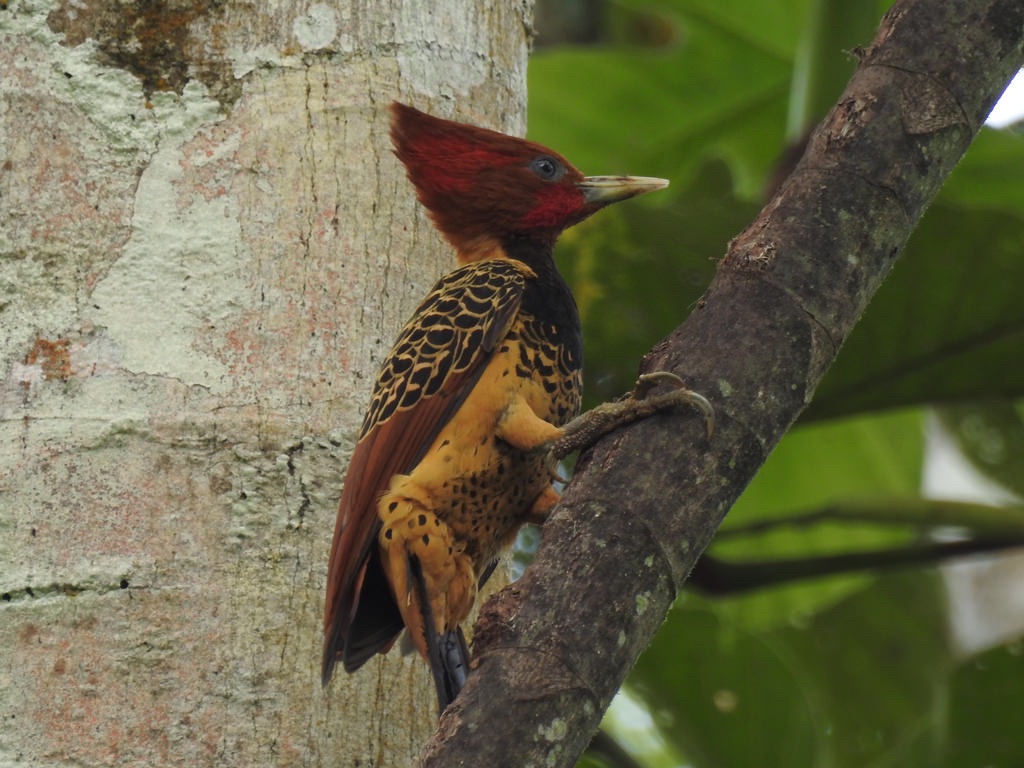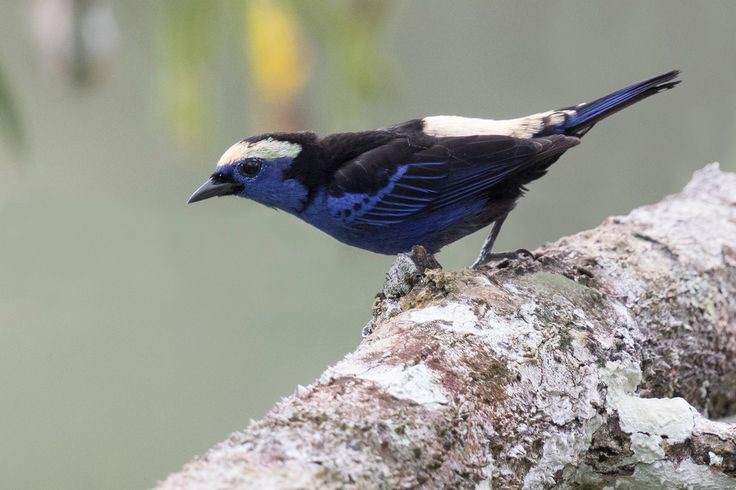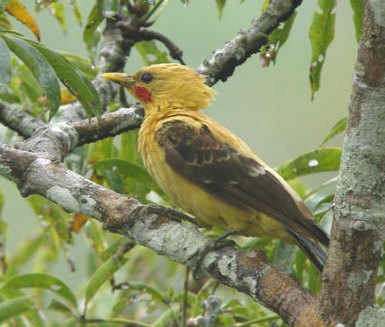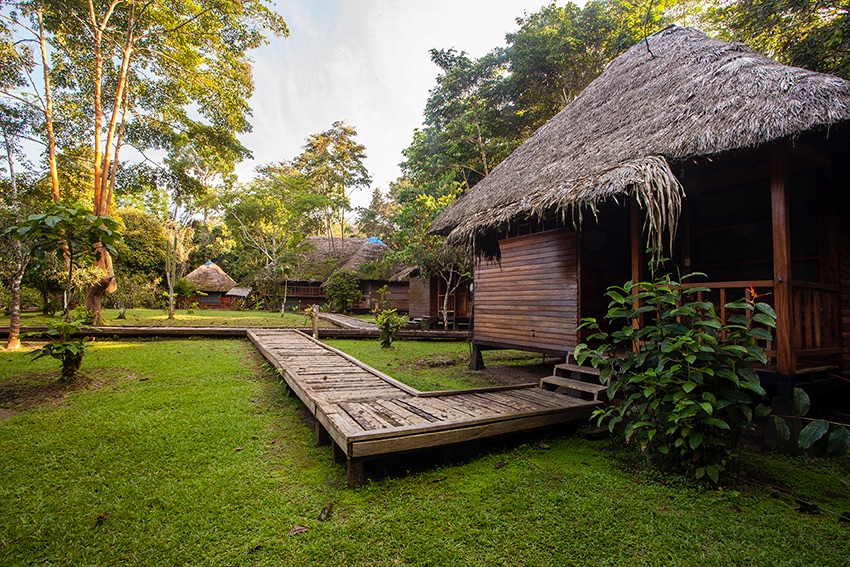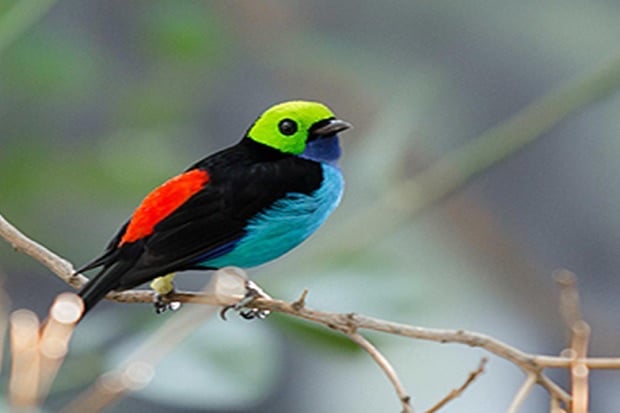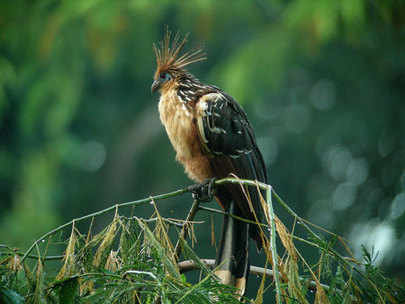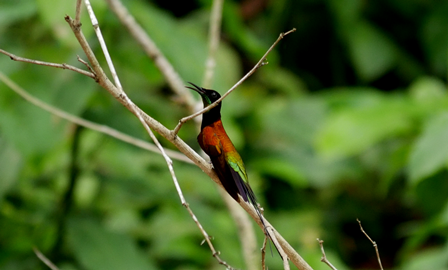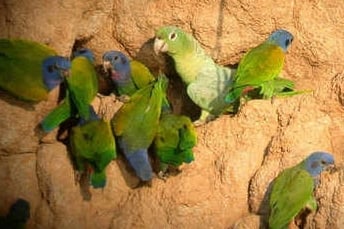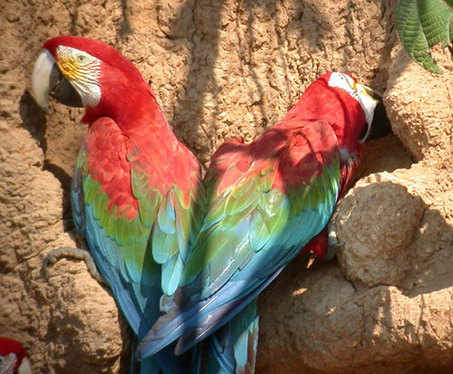ECUADOR - AMAZONIAN ADVENTURE 2023
Day 1 ARRIVAL IN QUITO - LA CARRIONA HACIENDA (24th April)
Please note this is purely an arrival day and no birding activities are planned. Or if you have taken part in our NW Ecuador tour then this will be the last day of that tour and should arrive at this lodge mid-afternoon and have time to rest!
Around the garden of our accommodation we could see a few commoner species such as Eared Dove, Sparkling Violetear, Black-tailed Trainbearer, Blue-and-white Swallow, Cinereous Conebill, Golden-rumped Euphonia, Blue-and-yellow Tanager, Southern Yellow Grosbeak, Hooded Siskin and others. We are going to be staying at the edge of Quito, which in itself is a fabulous city surrounded by a series of extremely impressive volcanoes: Cotopaxi (5896m), Antisana (5704m), Cayambe (5796m) and Pichincha (4701m), When you consider that Quito is around 2850m our first night in Ecuador is going to be at quite a high altitude. Night at La Carriona Hacienda.
Day 2 FLY TO COCA – SHIRIPUNO LODGE
We take a short flight over the Andes and down into the vast Amazonian wilderness to the small town of Coca. From here we will meet up with our vehicles and then drive 90kms south to the Shiripuno River where we will board a large motorized canoe that will take us 65kms and around 4 hours to the remote Shiripuno Lodge, where we will spend the next four nights. The boat ride will give us a great introduction to the more obvious Amazonian birds and our journey could provide us with species such as Cocoi Heron, Yellow-headed Caracara, Greater Yellow-headed Vulture, Collared and Pied Plovers, Large-billed and Yellow-billed Terns, Sand-coloured Nighthawk, Amazon and Ringed Kingfishers, Blue-and-yellow Macaw, Scarlet Macaw, White-throated Toucan, Swallow-wing, Chestnut-eared Aracari, Drab Water-Tyrant, Grey-capped Flycatcher,Bare-necked Fruitcrow, Violaceous Jay, Grey-breasted Martin, White-banded Swallow, Orange-backed Troupial, Magpie Tanager, Giant Cowbird and so much more.
Upon arrival at the remote Shiripuno Lodge we are going to find ourselves in a true wilderness. This is the gateway to Yasuni Biosphere Reserve and is set amidst pristine tropical Amazonian rainforest. The reserve area covers 16,820 square kilometres, surrounded by a 7,000 kilometre square Buffer Zone and a 4,820 Transition Zone. So after settling into our rooms we will begin our exploration of this awesome habitat. Night at Shiripuno Lodge.
Days 3 - 5 SHIRIPUNO LODGE
The main reason we have chosen Shiripuno Lodge is the superb trail system running through the terra firme forest and we will devote the majority of our time to this exciting, bird-rich Amazonian habitat. We’ll wander along the primary forest trails behind the lodge and look for army ant specialist such as Lunulated Antbird, Bicoloured Antbird, White-plumed Antbird, Sooty Antbird and Reddish-winged Bare-eye and also visit areas where we hope to see the rare Wing-banded Antbird, as well as Undulated Antshrike, Pearly Antshrike, Striped and Golden-headed Manakins and Yellow-billed Jacamar amongst others. Our patience along these trails may well be rewarded with unobtrusive species such as Black-tailed Leaftosser, Ocellated and Spix’s Woodcreepers, Olive-backed Foliage-gleaner, Black-faced and Rufous-capped Antthrushes, Fasciated, Plain-winged, Dusky-throated and Cinereous Antshrike, along with Ornate, Plain-throated, Rufous-tailed, Pygmy, Moustached, White-flanked and Grey Antwrens, Grey, White-shouldered, Black-faced, Spot-winged, Scale-backed and Yellow-browed Antbirds and hopefully Brown Nunlet. The nearby Oxbow Lake is a good area for White-lored Antpitta, Long-billed Woodcreeper, Green-and-rufous Kingfisher, and if we are very lucky Chestnut-headed Crake.
There are several really stunning birds that we shall make it our priority to find during our time here, with the incredible Fiery Topaz being high on our wish-list, along with Rufous Potoo that will hopefully be seen at a day roost, and last but definitely not least we hope to encounter Salvin's Curassow - a species that is rarely seen anywhere but this is THE place to spot one. And other uncommon birds we could find include Crested and Harpy Eagle, Red-shouldered and Dusky-billed Parrotlets, Rufous-headed Woodpecker, Collared and Chestnut-capped Puffbirds, Pavonine Quetzal, Yasuni and Rio Suno Antwrens, and the shy Black-necked Red Cotinga.
Meanwhile, large mixed-species feeding flocks hold such delights as Wing-barred Piprites, Pink-throated Becard, Chestnut-winged Hookbill, Chestnut-winged Foliage-gleaner, Wedge-billed, Cinnamon-throated and Lineated Woodcreepers, Buff-throated Woodcreeper, Dugand’s Antwren, Dusky-capped Greenlet, Purple Honeycreeper, Black-faced Dacnis, Rufous-bellied Euphonia, Opal-crowned, Opal-rumped, Masked Crimson, Flame-crested and Fulvous-crested Tanagers.
There are numerous other species present here and we also hope to see Rufescent Tiger-Heron, Boat-billed Heron, White Hawk, Black and Red-throated Caracaras, Bat Falcon, Speckled Chachalaca, Cobalt-winged Parakeet, Black-headed Parrot, Orange-winged Amazon, Greater Ani, Tropical and Tawny-bellied Screech-Owls, Crested, Spectacled and Black-banded Owls, Common, Long-tailed and Great Potoos, White-bearded and Great-billed Hermits, Fork-tailed Woodnymph, Grey-breasted Sabrewing, Short-tailed Swift, Neotropical Palm-Swift, Black-tailed, Amazonian White-tailed, Collared, Black-throated and Amazonian Violaceous Trogons, White-eared, Yellow-billed and Brown Jacamars, Amazonian Motmot, Black-fronted, White-fronted and Yellow-billed Nunbirds, Gilded and Lemon-throated Barbets, Golden-collared Toucanet, Many-banded and Ivory-billed Aracaris, Channel-billed Toucan, Crimson-crested, Chestnut, Cream-coloured and Red-stained Woodpeckers, Long-billed, Amazonian Barred and Black-banded Woodcreepers, Orange-fronted Plushcrown, White-lored Tyrannulet, White-eyed Tody-Tyrant, Amazonian Scrub-Flycatcher, Brownish Twistwing, Blue-crowned Manakin, Spangled, Plum-throated and Purple-throated Cotingas, Purple-throated Fruitcrow, White-winged Swallow, Lawrence’s Thrush, Green Honeycreeper, White-lored Euphonia, Red-capped Cardinal, Oriole Blackbird, Casqued Oropendola and Solitary Cacique.
Other animals present here include Red Howler Monkey, Common Squirrel Monkey and Golden-mantled Tamarin. Nights at Shiripuno Lodge.
Day 6 SHIRIPUNO LODGE - COCA - SANI LODGE
After some early morning birding at Shiripuno we will return to Coca. Our vehicles will bring us to the banks of the Rio Napo where a motorized canoe will be waiting to take us downstream for the two-and-a-half hour ride to Sani Lodge where we will stay for the next three nights. This superb lodge is located on an oxbow lake and we'll need to walk along a boardwalk trail to the lake and then transfer to small dugout canoes for the 15-minute paddle to our accommodations. It is traditional here to have a welcoming drink before dropping our luggage into the rooms before we set off on the first of many excursions across the lake. There's a great, open view here and we could see Chestnut-fronted and Red-bellied Macaws flying over, as well as White-throated Toucan, Black-billed Thrush, Black-fronted Nunbird, Masked Crimson Tanager and Yellow-rumped Cacique around the cabins.
No doubt we will quickly get to see the bizarre and prehistoric-looking Hoatzins as we paddle quietly along the edge of the lake. Around the lakesides dense tangled vegetation, which gives us an insight into the permanently flooded forest, we will look for species such as Ringed, Amazon, Green and the scarcer American Pygmy and Green-and-rufous Kingfishers, White-chinned Jacamar, Rufous-breasted Hermit, Dot-backed, Plumbeous and Silvered Antbirds, Cinnamon Attila, Black-capped Donacobious, Buff-breasted Wren and Masked Crimson Tanager. One of our main goals will be to find the elusive and near-mythical Zigzag Heron, a regular nocturnal denizen of thick vegetation along Amazonian lakeshores. The boardwalk between the Napo River and the oxbow lake traverses excellent semi-flooded forest, and we’ll look for the Cream-coloured Woodpecker, Plumbeous and White-shouldered Antbirds and maybe even Cocha Antshrike. At dusk we can hear Common Pauraque and Ferruginous Pygmy-Owls calling from the surrounding area. Night at Sani Lodge.
Days 7 - 8 SANI LODGE
What a place to wake up to with a cacophony of sounds emanating from the surrounding rainforest! One of the many highlights here are the parrot clay licks where hundreds of parrots come early in the morning to replenish their mineral supply by licking at exposed rocky areas. it is possible to see Mealy and Yellow-crowned Amazons, Blue-headed and Orange-cheeked Parrots and Dusky-headed Parakeet are all possible and provide an unforgettable spectacle.
Another great feature here is the 150-foot high canopy tower that provides a unique insight into canopy life of the tropical rainforest and has the advantage of giving eye-level views of birds we'd otherwise be looking at high overhead. It has a sturdy staircase and a sturdy wooden platform that wraps around a huge tree, where we hope to see species such as Slate-coloured Hawk, Blue-throated Piping-Guan, Cobalt-winged Parakeet, Lemon-throated Barbet, Lettered and Many-banded Aracaris, Golden-collared Toucanet, Spangled, Plum-throated and Purple-throated Cotingas, Yellow-browed Tody-Flycatcher, Eastern Sirystes, White-browed Purpletuft, Black-capped Becard, Fulvous Shrike-Tanager, White-browed Purpletuft, Green-and-gold, Opal-rumped, Paradise,Turquoise and Yellow-bellied Tanagers amongst others.
But we will probably need to spend more time on the network of trails that take us through superb primary varzea rainforest and, as always, we will be hoping for an army ant swarm. The list of species found in this vanishing habitat is seemingly limitless and our patience and stealth could be rewarded with such prizes as Great and Cinereous Tinamous, Purplish and even Yellow-billed Jacamar, Short-billed Leaftosser, Ringed Antpipit, Scale-breasted, Ringed and Rufous-headed Woodpeckers, Collared Puffbird, Ochre-striped Antpitta, Fulvous Antshrike, Lunulated, Hairy-crested, White-plumed and Banded Antbirds, Blue-crowned, Golden-headed and Wire-tailed Manakins, the rare Orange-crested Manakin, Chestnut-belted Gnateater, Screaming Piha and Rusty-belted Tapaculo. And there is always a chance of finding the rare Cocha Antshrike
There are many possibilities for our night-time forays as this amazing area holds Great, Common and Long-tailed Potoos, Tawny-bellied and Tropical Screech-Owls, Black-banded, Crested and Spectacled Owls and Short-tailed Nighthawk. Nights at Sani Lodge.
Day 9 SANI LODGE - COCA - QUITO
We will have a final morning in this fantastic area to either revisit the canopy tower, take a boat ride around the oxbow lake or look for some rare birds on one of the islands in the Napo River. This latter option would give us the chance to see some truly localised species such as Olive-spotted Hummingbird, Lesser Hornero, White-bellied Spinetail, Lesser Wagtail-Tyrant, Castelnau’s Antshrike, Black-and-white Antbird, and even Scarlet-crowned Barbet or Orange-headed Tanager. But all too soon it will be time to leave and we will return to Coca by motorized canoe and take a flight back to Quito where the tour concludes this afternoon.
All photos copyright Juan Carlos Calvachi

